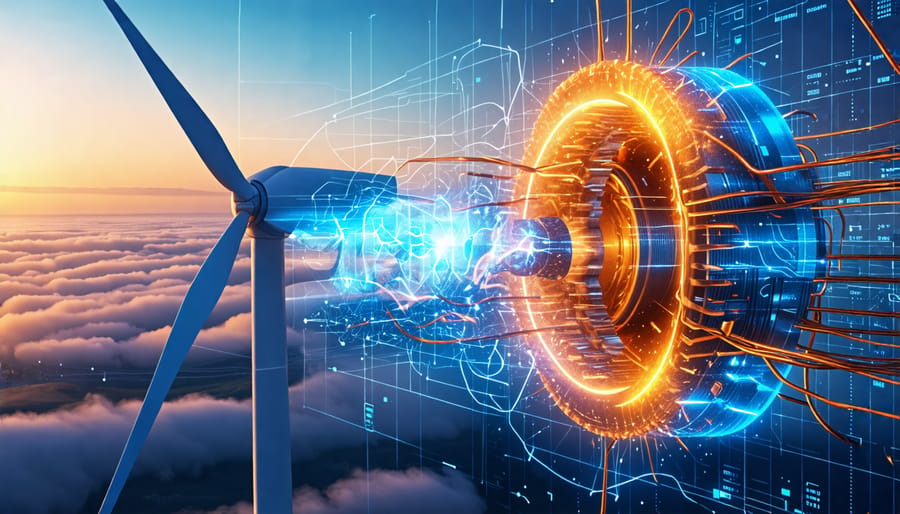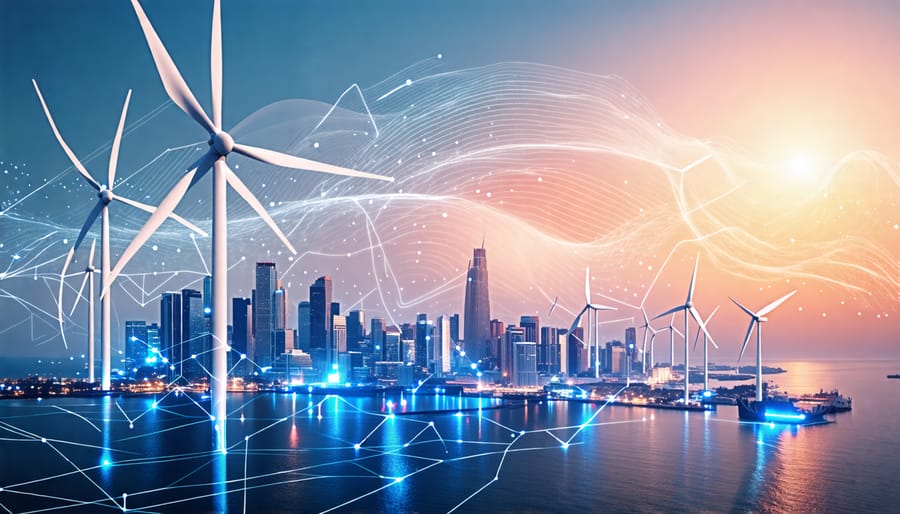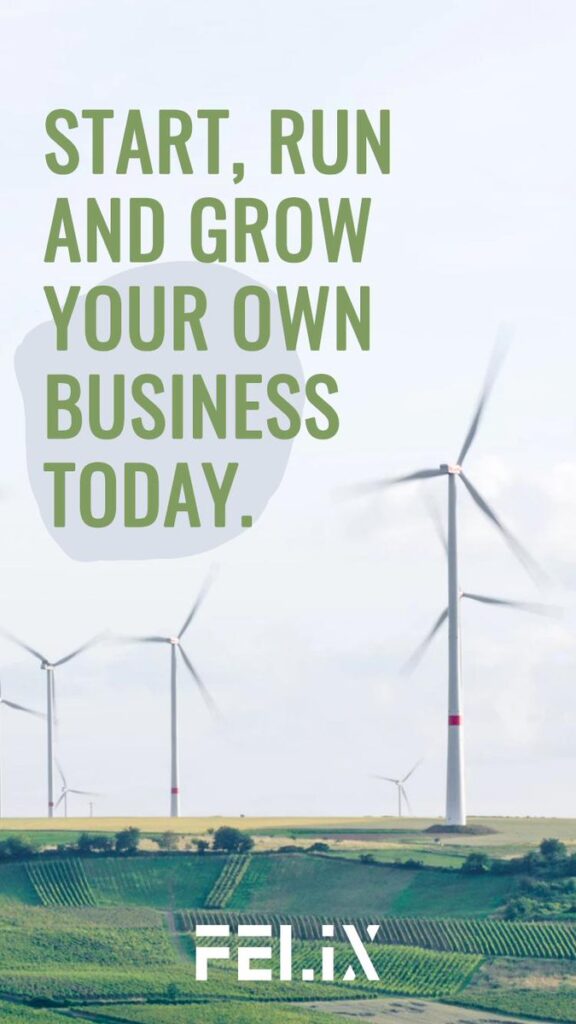Unravel the mysteries of clean energy with our in-depth exploration of 3 phase wind turbine wiring diagrams. In this powerful guide, we’ll illuminate the intricacies of how these sustainable machines convert blustery gales into usable electricity that powers our homes and cities.
You’ll gain a crystal-clear understanding of the core components, from the towering blades that capture wind’s kinetic force to the complex web of copper wires that carry the resulting current. Stunning visuals will map out exactly how alternating current is generated in the stator coils and rectified for grid transmission. And you’ll discover how much energy a wind turbine produces under various wind speed conditions.
Whether you’re an engineering student, renewable energy professional, or eco-minded citizen, this authoritative resource will give you a commanding grasp of 3 phase wind technology. Prepare to be blown away as we demystify the electrifying science propelling us towards a cleaner, greener future. Let the journey begin!
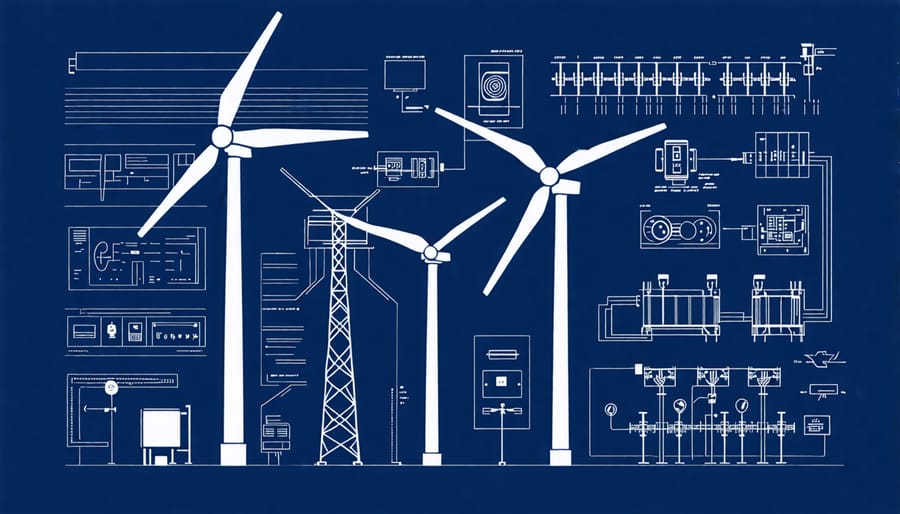
Components of a 3 Phase Wind Turbine Wiring System
The Generator
The generator is the heart of a wind turbine’s electrical system, converting the mechanical energy from the rotating blades into usable three-phase alternating current (AC) power. Most modern wind turbines employ synchronous generators, which maintain a constant frequency synchronized with the power grid. These generators typically use permanent magnets or electromagnets to create a rotating magnetic field, inducing an electric current in the stator windings as the rotor spins. The resulting three-phase AC power is then fed into the wind turbine’s wiring system for conditioning and distribution.
Alternatively, some wind turbines use induction generators, which rely on the grid to provide the necessary excitation current for the rotor. While simpler and more cost-effective, induction generators require a gearbox to match the rotor speed to the grid frequency. Regardless of the generator type, the three-phase AC power produced by the wind turbine generator forms the foundation of the electrical system, which is then transformed, filtered, and controlled by the various components in the wiring diagram.
Power Converter
The power converter is a critical component in a 3 phase wind turbine system, responsible for transforming the variable frequency AC output from the generator into grid-compatible AC power. Two main types of converters are commonly used: full power converters and doubly-fed induction generator (DFIG) converters. Full power converters process the entire output of the generator, offering greater control and flexibility but at a higher cost. DFIG converters only handle a portion of the generator’s output, resulting in a more cost-effective solution but with reduced control capabilities. The choice between these converter types depends on factors such as turbine size, grid requirements, and budget. Regardless of the type, the power converter ensures that the electricity generated by the wind turbine meets the strict frequency, voltage, and power quality standards required for integration into the electrical grid, making wind energy a reliable and efficient source of clean power.
Transformer and Grid Connection
The transformer plays a vital role in stepping up the voltage generated by the wind turbine to match the high-voltage levels required for efficient transmission across the power grid. This voltage increase minimizes power losses during long-distance transmission. The three-phase AC power from the generator is fed into the transformer, which uses electromagnetic induction to increase the voltage while maintaining the same frequency. Once the voltage has been stepped up, the wind turbine’s output is ready to be integrated into the power grid. The transformer is connected to a substation, which serves as the interface between the wind turbine and the main electrical grid. At the substation, the power is further conditioned and synchronized with the grid’s frequency and phase before being dispatched to homes and businesses as clean, renewable energy.
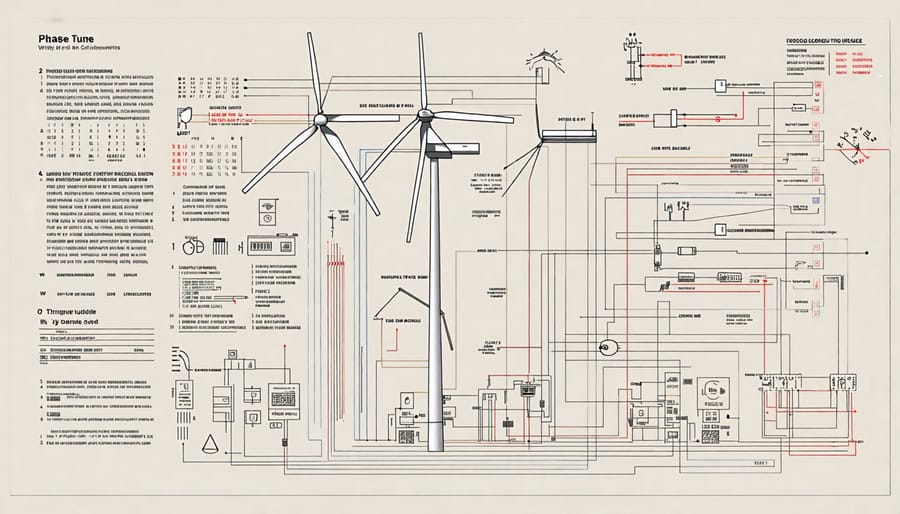
Understanding 3 Phase Wiring Diagrams
Reading and interpreting 3 phase wiring diagrams is a critical skill for anyone working with wind turbine systems. These diagrams provide a visual representation of the electrical connections and components within the system, serving as a roadmap for installation, maintenance, and troubleshooting. To effectively understand these diagrams, it’s essential to familiarize yourself with the common symbols and conventions used.
Start by identifying the main components, such as the generator, controller, and 3 phase transformers. Each component will be represented by a unique symbol, which should be clearly defined in the diagram’s legend. Pay close attention to the lines connecting these components, as they represent the wiring and the flow of electricity through the system.
Next, focus on the labeling of the wires. In a 3 phase system, you’ll typically see wires labeled as L1, L2, and L3, representing the three phases. The neutral wire, if present, will be labeled as N. Ground wires are usually represented by the letter G or the symbol for earth. Understanding these labels is crucial for ensuring proper connections and avoiding potential safety hazards.
Color-coding is another important aspect of 3 phase wiring diagrams. While color codes may vary depending on the country or manufacturer, some common conventions include using brown, black, and grey for the three phases, blue for neutral, and green or green with a yellow stripe for ground. Familiarizing yourself with the color codes used in your specific diagram will make it easier to trace wires and troubleshoot issues.
When studying the diagram, pay attention to any additional information provided, such as wire gauges, voltage ratings, and amperage ratings. These details are crucial for selecting the appropriate wires and components during installation or replacement.
It’s important to emphasize that following the wiring diagram exactly is essential for the proper functioning and safety of the wind turbine system. Even small deviations can lead to inefficiencies, malfunctions, or even dangerous situations. Always double-check your connections against the diagram and consult with a professional if you’re unsure about any aspect of the wiring process.
By taking the time to thoroughly understand and follow 3 phase wiring diagrams, you can ensure that your wind turbine system operates at peak efficiency and safety. With practice and attention to detail, reading these diagrams will become second nature, empowering you to effectively install, maintain, and troubleshoot your renewable energy system.
Safety Considerations and Best Practices
When working with 3 phase wind turbine wiring, safety should always be the top priority. Proper grounding is essential to prevent electrical shocks and ensure the system functions correctly. Use copper grounding rods and securely connect all metal components, including the turbine tower and control panel, to the grounding system. Regularly check connections for corrosion or damage.
Selecting the appropriate wire gauge is crucial for safe and efficient operation. Undersized wires can overheat, leading to fire hazards and reduced performance. Consult the turbine manufacturer’s specifications and local electrical codes to determine the correct wire size based on the turbine’s power output and the distance between the turbine and the load.
Always disconnect and lock out the power source before performing any maintenance or repairs on the turbine or wiring. Use insulated tools and wear personal protective equipment (PPE) such as rubber gloves and safety glasses when working with electrical components.
Properly label all wires and terminals to avoid confusion and potential mistakes during installation or maintenance. Use weatherproof and UV-resistant labels to ensure long-term readability in outdoor conditions.
Regularly inspect the wiring and connections for signs of wear, damage, or loose connections. Address any issues promptly to prevent further damage or safety hazards. Keep detailed records of maintenance and repairs for future reference.
Common mistakes to avoid include using incorrect wire gauges, failing to properly ground the system, and not following the manufacturer’s instructions for installation and maintenance. Additionally, attempting to work on the turbine or wiring without proper training or safety precautions can lead to serious injuries or equipment damage.
By adhering to these safety considerations and best practices, you can ensure the reliable and safe operation of your 3 phase wind turbine wiring system, maximizing its performance and longevity.
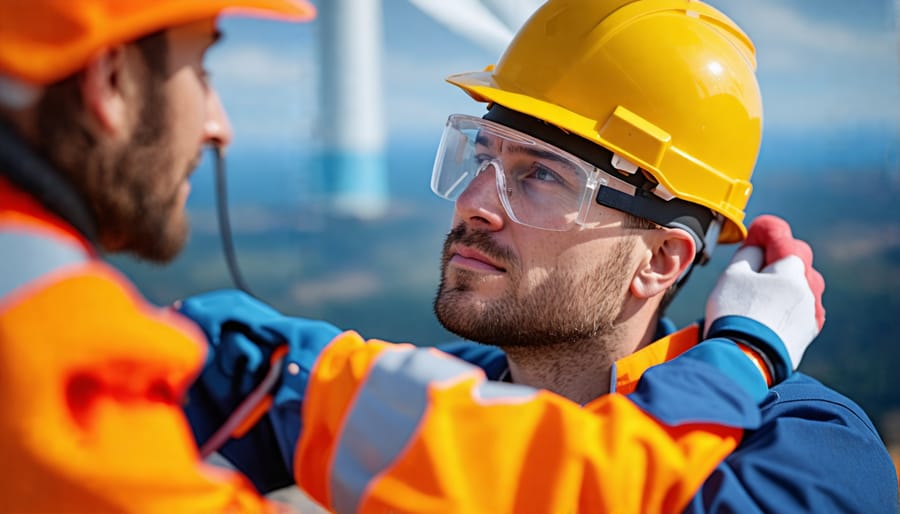
Conclusion
In conclusion, 3 phase wind turbine wiring diagrams provide a vital roadmap for harnessing the immense potential of wind energy. By understanding the intricacies of generator connections, power distribution, and safety systems, we can ensure that wind turbines operate at peak efficiency and reliability. Proper wiring is not just a technical necessity; it’s a crucial step towards a greener, more sustainable future. As we continue to explore wind power’s role in our clean energy future, mastering these wiring principles will be key to unlocking the full potential of this abundant, renewable resource. With the right knowledge and implementation, wind turbines can help power our homes, communities, and the world at large, propelling us towards a brighter, cleaner tomorrow.

